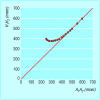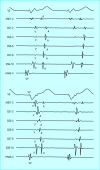Percutaneous interventional electrophysiology
- PMID: 12896944
- PMCID: PMC1126663
- DOI: 10.1136/bmj.327.7409.280
Percutaneous interventional electrophysiology
Figures










References
-
- Olgin JE, Zipes DP. Specific arrhythmias: diagnosis and treatment. In: Braunwald E, Zipes DP, Libby P, eds. Heart disease. 6th ed. Philadelphia: Saunders, 2001: 1877-85
-
- McGuire MA, Janse MJ. New insights on the anatomical location of components of the reentrant circuit and ablation therapy for atrioventricular reentrant tachycardia. Curr Opin Cardiol 1995;10: 3-8 - PubMed
-
- Jackman WM, Beckman KJ, McClelland JH, Wang X, Friday KJ, Roman CA, et al. Treatment of supraventricular tachycardia due to atrioventricular nodal re-entry by radiofrequency catheter ablation of the slow-pathway conduction. N Engl J Med 1992;327: 313-8 - PubMed
-
- Calkins H, Leon AR, Deam AG, Kalbfleisch SJ, Langberg JJ, Morady F. Catheter ablation of atrial flutter using radiofrequency energy. Am J Cardiol 1994;73: 353-6 - PubMed
-
- Schilling RJ, Peter NS, Davies DW. Feasibility of a non-contact catheter for endocardial mapping of human ventricular tachycardia. Circulation 1999;99: 2543-52 - PubMed
Publication types
MeSH terms
LinkOut - more resources
Full Text Sources
